Throughout history, pearls have been highly prized as symbols of luxury, power and elegance. Queen Elizabeth I was one of the most noted pearl lovers, with her crown, wig, and more than 300 gowns laden, set and sewn with pearls. Coco Chanel was another who helped establish the place of pearls, wearing them constantly.
It is thanks to Chanel that the pearl strand has become the enduring epitome of class in women's fashion. Perhaps the pearl's favour in fashion is due to the many different varieties it comes in.
Pearl colour refers specifically to the colour of the pearl's body and this typically ranges from white, to cream to silver. In addition, there are colour overtones reflected across a pearl's surface. Thus, the true colour of a pearl is a mix of its body colour and its overtone.
While pearls are ideally round, perfectly round pearls are as rare as totally unblemished ones and those that do exist command exorbitant prices. Usually, pearls range from "all round" to "mostly round." Other shapes include button, drop, mabe, keshi, baroque or circle (round with groves).
In nature, pearls form when an irritant such as a parasite or some other foreign matter enters the body of the pearl-producing mollusc (an oyster). To ease the irritation, the mollusc deposits concentric layers of nacre (calcium carbonate) over the irritant, and cementing it to its shell. This nacred bulge becomes the pearl.
The size of the pearl depends on the amount of nacre laid over the irritant. In general, the thicker the nacre, the more lustrous and reflective the pearl's surface will be.
Indeed, lustre is the most important factor determining the quality of a pearl. For this reason, it is important that the surface be without blemish, because lustre is more often seen on a smooth surface without ridges that deflect the light.
Cultured pearls, first commercially created by Kokichi Mikimoto in the 1800s when he succeeded in producing five semi-spherical cultured Akoya pearls, need human intervention to start the pearl-producing process; however, like saltwater pearls, cultured pearls typically form when a bead nucleus (commonly mother-of-pearl) and a piece of mantle tissue are humanly inserted into a pearl-producing saltwater mollusc (an oyster).
The oyster is then returned to the water for one or more years. It first deposits a layer of organic material (conchiolin) over the bead nucleus and then deposits the nacre over that.
Freshwater cultured pearls usually form when a piece of mantle tissue is inserted into a freshwater mollusc (a mussel). After it is returned to the water following implantation, the mussel begins to secrete a layer of organic material (conchiolin), then layers of nacre.
As jewellery items, pearls are delicate and require a little extra care. They should be stored separately to other jewellery and cleaned regularly to remove build-ups of acid from the skin which can detract from the gem's lustre and shape. Avoid contact with perfumes and hairspray and do not wear in water.
Fact sheet
Hardness: 2.5 – 4.5
Variety of: organic gem comprised of a form of Calcium Carbonate.
Found: Persian Gulf, India Australia, Tahiti, Japan, the Americas, British Isles and China.
JUNE Birthstones
• Modern birthstone: pearl, moonstone
• Traditional birthstone: alexandrite
• Mystical birthstone: moonstone
• Ayurvedic birthstone: pearl
Zodiac Birthstones:
• Gemini (21 May – 21 June) agate, citrine, tiger's eye
• Cancer (22 Jun – 22 July) emerald, green aventurine
PEARL COLOUR CHART
A Rainbow of Colours |
Like diamonds, untreated pearls can be found in a wide variety of colours. The colour of a pearl is determined by the type of mollusc it originates from, the thickness of its nacre, and miscroscopic pigments in its conchiolin – the organic ‘glue’ within the nacre. There are three components when observing pearl colour: body colour, overtone, and orient. The body colour is the dominant hue of the pearl, while the overtone refers to the ‘translucent’ or reflective colours of the pearl and the orient is the rainbow-like iridescence of the pearl. |
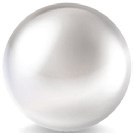 | WHITE
Both saltwater and freshwater molluscs can produce the classic white pearl, but Australian South Sea pearls from the silver-lipped Pinctada maxima are the most sought after. |
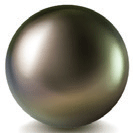 | BLACK
The black-lipped oysters of the South Pacific, Pinctada margaritifera, produce natural black pearls, often referred to as Tahitian pearl. Rainbow-lipped oysters – Pteria sterna, found in Mexico – also produce natural black pearls. |
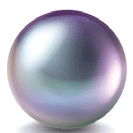 | LAVENDER
Freshwater pearls from the Hyriopsis cumingii mussels occur in shades from pale lilac to deep violet. They are often grown in China. |
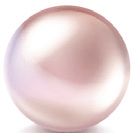 | PINK
Freshwater pearls – those grown in mussels like Hyriopsis cumingii and Cristaria plicata – can be naturally pink. They are commonly farmed in China and Japan. |
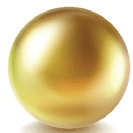 | GOLD
Gold-lipped Pinctada maxima oysters produce golden South Sea pearls. These pearls can range from soft champagne to deep gold, with more saturated colour commanding higher prices. They are found in the Philippines, Indonesia, Australia and Myanmar (Burma). |
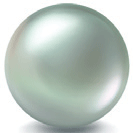 | GREEN
On the east coast of Australia, Pinctada fucata are cultured to produce Akoya pearls with a variety of natural hues, including a unique silver-green. |
CLICK to view the pearl inspiration board